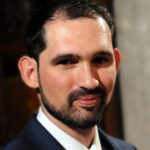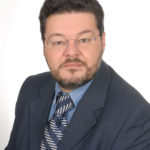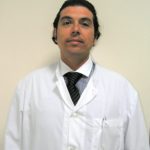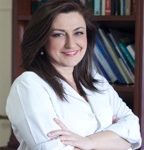Course details
General
| Faculty | Health Sciences | ||
| Department | Medicine | ||
| Education level | 2nd / Post-graduate | ||
| Course code | PMHRA004 | Trimester | 1 |
| Course title | Male Reproductive Endocrinology | ||
| Independent teaching activities | Hours per week | ECTS | |
| Lectures | 1 | ||
| Exercises | 3 | ||
| Total | 4 | 5 | |
| Coursetype | General knowledge, skill acquiring | ||
| Prerequisite courses | None | ||
| Teaching and assessment language | English | ||
| Course URL | Male Reproductive Endocrinology | ||
Learning objectives
Aim
Upon the completion of this module, the post-graduate student will possess the basic principles of Male Reproductive Endocrinology, and, on an everyday practice level, he/she will be able to propose the basic diagnostic and therapeutic approach of cases with relevant disorders.
Knowledge
The participants will possess:
- The basic principles of Male Reproductive Endocrinology in the male
- Advanced knowledge on special topics of Male Reproductive Endocrinology (environmental and reproduction, endocrine disruptors, doping in elite sports and recreational exercise, gender incongruence)
Skills
The participants will be able to:
- Apply the basic principles of Male Reproductive Endocrinology on everyday clinical practice
- Evaluate and select the optimal diagnostic procedure, on the basis of sensitivity and specificity
- Prioritize therapeutic modalities, on the basis of cost-benefit ratio
- Transform clinical cases into meaningful clinical queries
- Search for primary and secondary data from reliable sources
- Critically appraise the available data
Syllabus
- Introduction to male Reproductive Endocrinology
- Male infertility
- Imaging in male fertility
- Medical treatment of male infertility
- Varicocele
- Male Accessory Gland Infections
- Spermiogram and Andrology lab
- Environment and male fertility
- Thyroid disorders
- Male hypogonadism
- Erectile dysfunction
- Transgender Medicine
- Genetics in male infertility
Teaching and learning methods – evaluation
| Teaching methods | Face to face Distance learning |
|
| Use of information and communication technologies (ICT) |
|
|
| Module structure | Work Hours per Semester | Activity |
| Lectures | 40 | |
| Exercises (Quiz) | 10 | |
| Exercises (Online discussion fora) | 25 | |
| Exercises (Study relevant papers) | 20 | |
| Final assignment | 30 | |
| Overall work for the course | 125 | |
| Assessment Methods |
|
|
Suggested reading
- Corona G, Goulis DG, Huhtaniemi I, Zitzmann M, Toppari J, Forti G, Vanderschueren D, Wu FC. European Academy of Andrology (EAA) guidelines on investigation, treatment and monitoring of functional hypogonadism in males. Andrology. 2020 Feb 5. doi: 10.1111/andr.12770.
- Tournaye H, Krausz C, Oates RD. Novel concepts in the aetiology of male reproductive impairment. Lancet Diabetes Endocrinol. 2016 Jul 6. pii: S2213-8587(16)30040-7. doi: 10.1016/S2213-8587(16)30040-7.
- Tournaye H, Krausz C, Oates RD. Concepts in diagnosis and therapy for male reproductive impairment. Lancet Diabetes Endocrinol. 2016 Jul 6. pii: S2213-8587(16)30043-2. doi: 10.1016/S2213-8587(16)30043-2.
- Lotti F, Frizza F, Balercia G, Barbonetti A, Behre HM, Calogero AE, Cremers JF, Francavilla F, Isidori AM, Kliesch S, La Vignera S, Lenzi A, Marcou M, Pilatz A, Poolamets O, Punab M, Peraza Godoy MF, Rajmil O, Salvio G, Shaeer O, Weidner W, Maseroli E, Cipriani S, Baldi E, Degl’Innocenti S, Danza G, Caldini AL, Terreni A, Boni L, Krausz C, Maggi M. The European Academy of Andrology (EAA) ultrasound study on healthy, fertile men: clinical, seminal and biochemical characteristics. Andrology. 2020 Apr 30. doi: 10.1111/andr.12808
- Boutari C, Pappas PD, Mintziori G, Nigdelis MP, Athanasiadis L, Goulis DG, Mantzoros CS. The effect of underweight on female and male reproduction. Metabolism. 2020 Apr 11;107:154229. doi: 10.1016/j.metabol.2020.154229.
- Mintziori G, Nigdelis MP, Mathew H, Mousiolis A, Goulis DG, Mantzoros CS. The effect of excess body fat on female and male reproduction. Metabolism. 2020 Feb 28:154193. doi: 10.1016/j.metabol.2020.154193.
- Kanakis GA, Nordkap L, Bang AK, Calogero AE, Bártfai G, Corona G, Forti G, Toppari J, Goulis DG, Jørgensen N. EAA clinical practice guidelines-gynecomastia evaluation and management. Andrology. 2019 Nov;7(6):778-793. doi: 10.1111/andr.12636.
- Wang C, Festin MP, Swerdloff RS. Male Hormonal Contraception: Where Are We Now? Curr Obstet Gynecol Rep. 2016;5:38-47. Epub 2016 Jan 29.
- Iliadou PK, Tsametis C, Kaprara A, Papadimas I, Goulis DG. The Sertoli cell: Novel clinical potentiality. Hormones (Athens). 2015 Oct-Dec;14(4):504-14. doi: 10.14310/horm.2002.1648.
- Gies I, Oates R, De Schepper J, Tournaye H. Testicular biopsy and cryopreservation for fertility preservation of prepubertal boys with Klinefelter syndrome: a pro/con debate. Fertil Steril. 2016 Feb;105(2):249-55. doi: 10.1016/j.fertnstert.2015.12.011.












